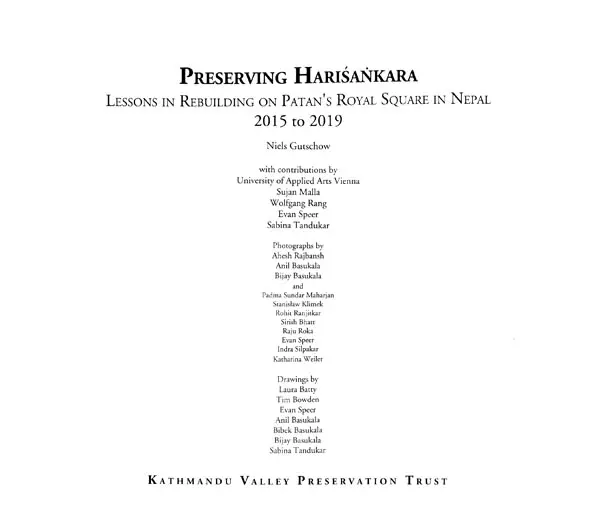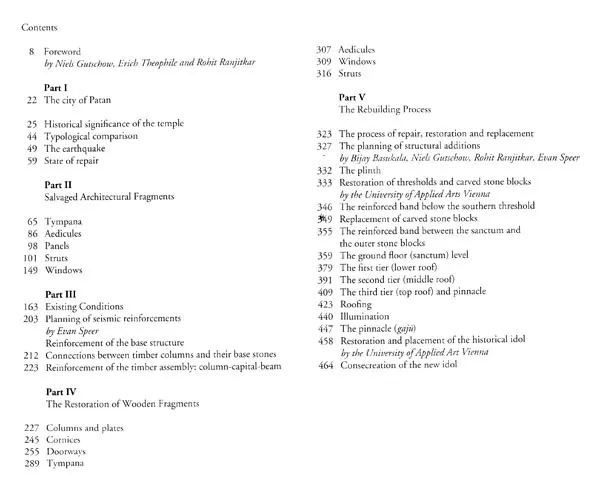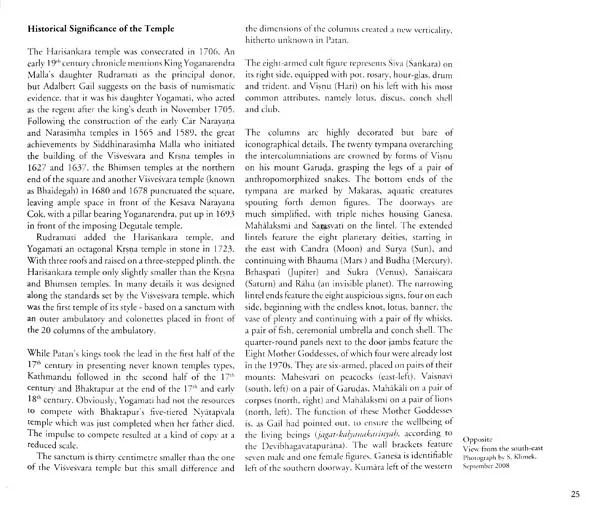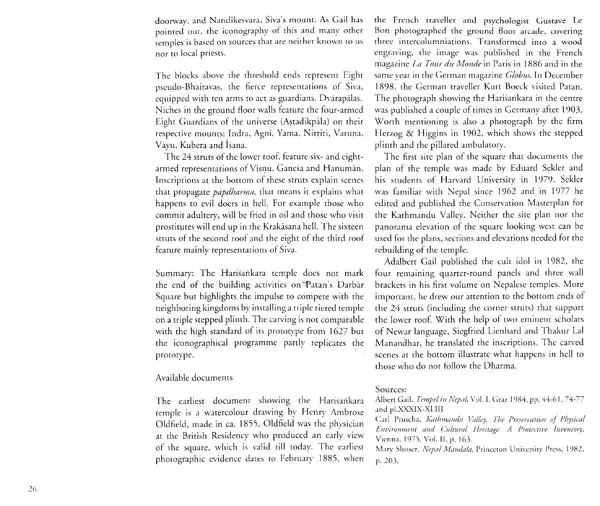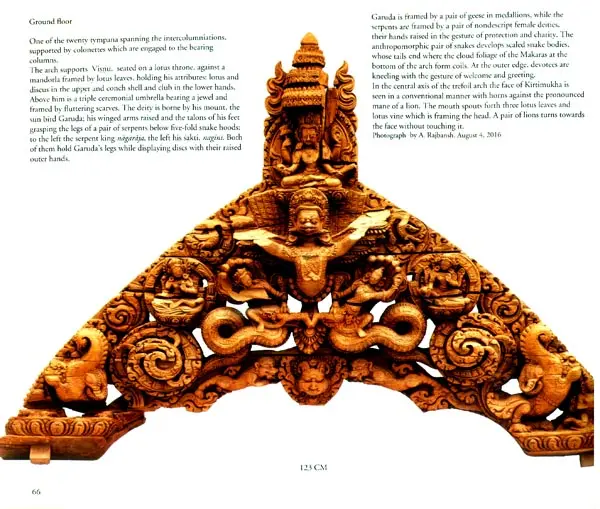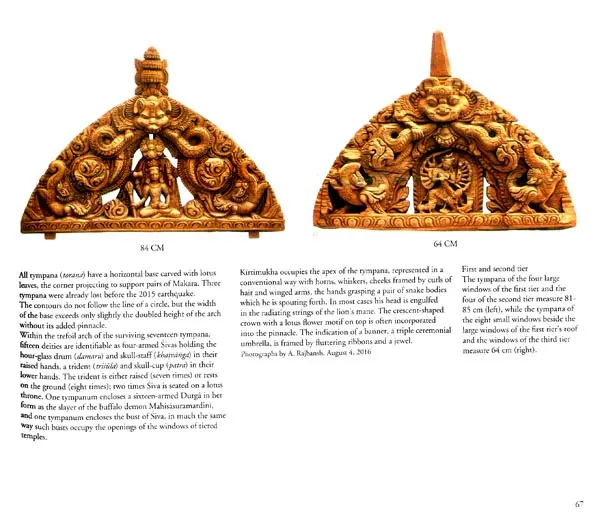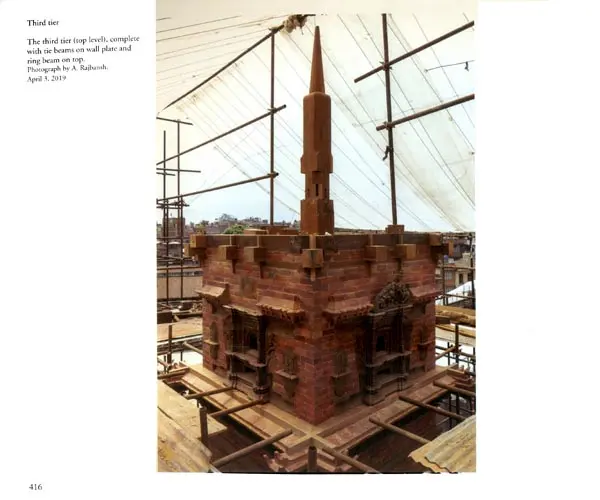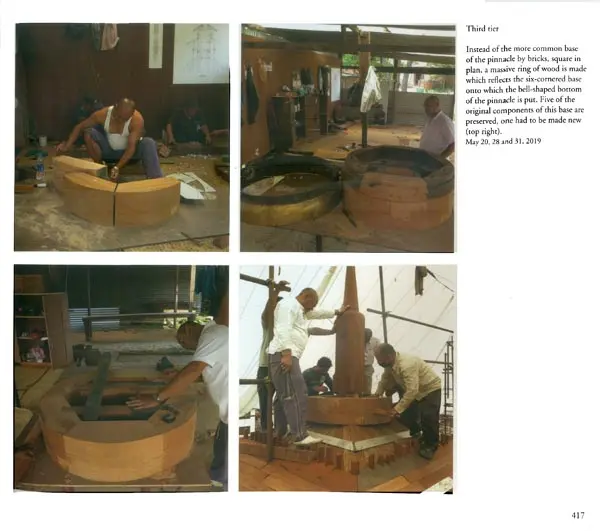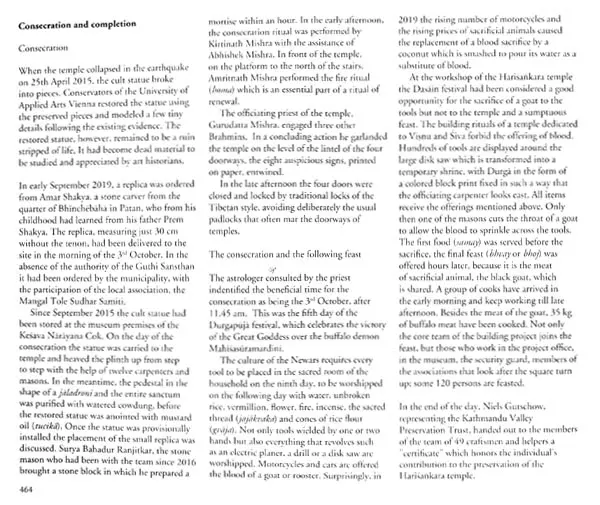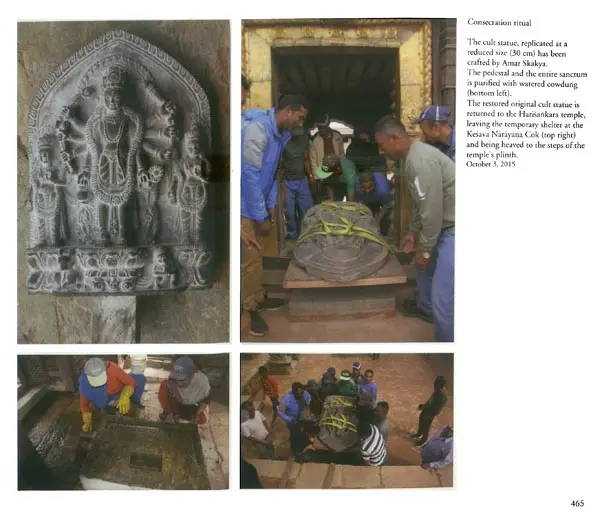
Preserving Harisankara- Lessons in Rebuilding on Patan's Royal Square in Nepal 2015 to 2019
Book Specification
| Item Code: | UAJ380 |
| Author: | Niels Gutschow |
| Publisher: | Kathmandu Valley Preservation Trust |
| Language: | English |
| Edition: | 2019 |
| ISBN: | 9789937067256 |
| Pages: | 472 (Throughout Color and B/w Illustrations) |
| Cover: | PAPERBACK |
| Other Details | 8.50 X 10.00 inch |
| Weight | 1.74 kg |
Book Description
While the first round of post-quake project scouting by Trust's team leaders (Cuts chow, Ranjitkar, and Theophile) had looked at important, damaged structures in all three urban centers of the Kathmandu Valley (Kathmandu, Paran, and Bhakrapur), this development in Bhakrapur helped clarify that limiting risk by a focus on Patan might yield the best results for a small charity.
It was in Patan that the Kathmandu Vailey Preservation Trust had completed the largest number of projects, had numerous local partners, and a uniquely successful track record with more than fifty building projects. A concentration on one site also allowed for an economy of scale and resources, allowing more work to be done in less time and, as it turned out shortly thereafter, help KYPT construction efforts continue despite the hardships and shortages of the Indian Embargo in 2016. At the time of the earthquake, the Trust was actively working on a multi-year restoration of the Patan Palace and employed a 50-person construction team. KVPT had access to the site including the extensive gardens to the rear, as well as official permissions to work within the palace complex. All of the logistics proved critical to the Trust's start-up of rescue and rebuilding work.
In mid-April 2016 when the Gerda Henkel Foundation approved the revised proposal for a project in Patan, the rebuilding of the collapsed Harishankara Temple, the team was able to mobilize immediately. This project proposal, with detailed work plan and cost estimate would constitute the fifth of the five major projects in the Darbar Square adopted by the Trust within a year of the quake.
This group of six seriously damaged or collapsed historical structures included: Char Narayan Temple, Krishna Mandir, the two Manimandapas (arcaded halls), Vishveshvara Temple, and one wing of the Sundari Cook Palace. to only did this constellation of projects naturally define the core of this, Nepal's most intact UNESCO World Heritage Site, but each of the six structures was in itself counted among the country's most significant architectural monuments. If the Harishankara project marked a clear turn of the Kathmandu Valley Preservation Trust to focus on Patan, the success of this decision was reflected in the momentum and efficiency that led to the completion of more than twenty projects by the Kathmandu Valley Preservation Trust by the end of2019.
Selected reconstruction milestones In keeping with the Newars' highly-developed system of religious rituals, the project was inaugurated by the craftsmen and team with a conciliatory ritual (Kathmandu), a traditional ceremony offered to the deity by the Brahmin priest in charge of the temple, Gurudatta Mishra on September 10, 2016. By then, the former Archaeological Garden of the Patan Palace complex had become the "Royal Workshop" of the 21" century, a tourist destination in its own right with dozens of craftsmen working in 100 square meters of temporary workshop and 200 square meters of storage space.
Given the priority of the reconstruction project to document and reuse the wealth of historical fabric -- all elements of the fallen building -- hands-on work by the artisans on the significant, recovered components began in June 2015 in parallel with the endless process of identification, sorting, and piecing together more than 2000 puzzle parts. Thus, four months later in early January of 2016, row carpenters started to replicate row badly damaged columns from the temple's impressive ambulatory; the other 18 members were all sound enough to reuse with some repairs and seismic improvements.
They also began to assess damage to the remaining eighteen columns and the four corner columns recovered from the rubble, which were incorporated in the masonry walls of the temple's sanctum. One symbolic milestone in the repair and re-carving effort was the assembly and erection of the first temple portal, consecrated on September 24, 2017. The wrap-around ambulatory of the temple, a timber framework of columns, capitals, cornices and beams, was fully "test-assembled" in the Palace's rear garden from November, 2017 to February, 2018 to assess and refine before disassembling and final erection on the temple plinth some 100 meters away.
By September 2018 all the carved timber elements had been repaired or reconstituted to rebuild the second floor of the temple; by March 2019, the third-floor elements were complete. The carving of new replacements, pieces of varying size to complete all columns, doorways, windows and tympana, continued until January 2019.
The Structural timbers - including the rafters and struts of all three tiers of roof -- were in place in early May 2019. The combined man-days of this team of woodcarvers, carpenters, draftsmen, project managers and architects to identify, repair, re-assemble or reserve, is estimated at several thousand man-days over almost four years. Much of the design and decision-making process at the level of individual elements, joints, and motifs were documented as a uniquely detailed contribution to preservation practice.
If one only really understands a structure when forced to rebuild it - and if one can only fully document all its component elements when they are disassembled, able to be photographed, measured, and drawn, then perhaps opportunity to develop and publish this book, the most fully detailed. arid complete documentation of a Newar multi-tiered temple can be understood as a gift of the otherwise devastating earthquake.
The Harishankara reconstruction project along with Char Narayan Temple, row of the Paran Darbar Earthquake Response projects are notably the first major post-quake reconstructions since the arrival of international participation and preservation techniques in Nepal in the early 1970's. The last major earthquake had been in 1934. In addition to documentation of the architectural elements and rebuilding process, this volume describes how an international team (Nepalese, German, and American) negotiated between local and international building philosophies and practices.
Since the 1990's, the authors have been active in the Kathmandu Valley, identifying and sharing preservation practice as contributions to a global discourse. This discourse addresses the collisions and intersections of different preservation values at World Heritage Sites: East vs. West, meeting of local vs. international, World Heritage vs. indigenous cultural values, etc.
Book's Contents and Sample Pages
